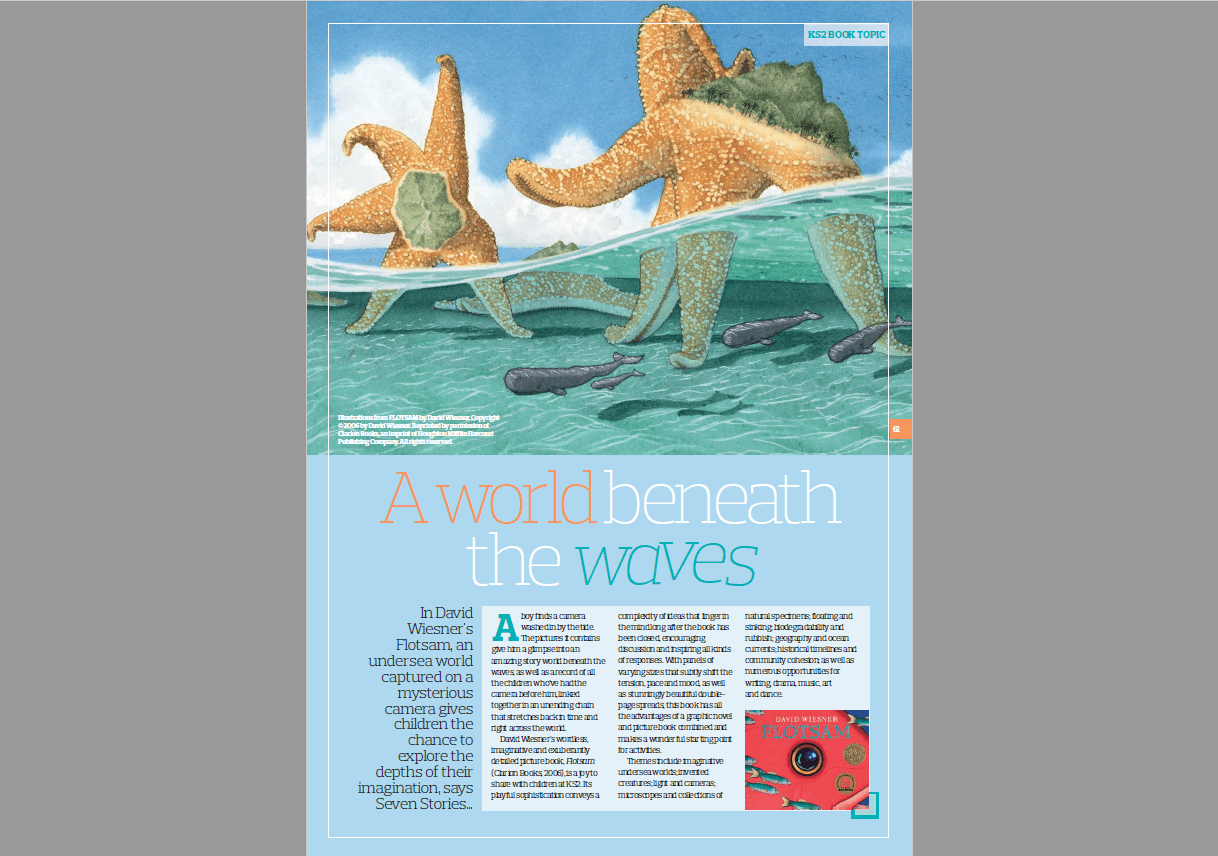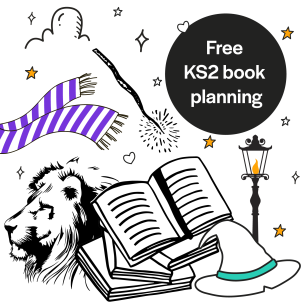In David Wiesner’s Flotsam book, a boy finds a camera on a beach, which contains images of a fantastical underwater world of invented creatures.
This wordless picturebook explores natural sciences from specimens to things like floating and sinking; biodegradability and ocean currents. This free PDF contains numerous ideas for writing, drama, music, art and dance, all linked to the book.
What is the book Flotsam about?
A boy finds a camera washed in by the tide. The pictures it contains give him a glimpse into an amazing story world beneath the waves, as well as a record of all the children who’ve had the camera before him, linked together in an unending chain that stretches back in time and right across the world.
Why is this a good book for KS2?
David Wiesner’s wordless, imaginative and exuberantly detailed picture book is a joy to share with children at KS2.
Its playful sophistication conveys a complexity of ideas that linger in the mind long after the book has been closed, encouraging discussion and inspiring all kinds of responses.
With panels of varying sizes that subtly shift the tension, pace and mood, as well as stunningly beautiful double-page spreads, this book has all the advantages of a graphic novel and picture book combined and makes a wonderful starting point for activities. Themes include:
- imaginative undersea worlds
- invented creatures
- light and cameras
- microscopes and collections of natural specimens
- floating and sinking
- biodegradability and rubbish
- geography and ocean currents
- historical timelines and community cohesion
There are numerous opportunities for writing, drama, music, art and dance.
This article is adapted from Hooks Into Books from Seven Stories. Browse more World Ocean Day activities.

Similar resources
- Turn weird facts into stories with Frank Cottrell-Boyce – Author In Your Classroom ep 15
- Write about what you love with Dan Freedman – Author In Your Classroom ep 14
- Make objects magical with Joan Haig – Author In Your Classroom ep 13
- Tell stories from the past with Bali Rai – Author In Your Classroom ep 12
- Find your voice with Benjamin Zephaniah – Author In Your Classroom ep 11












